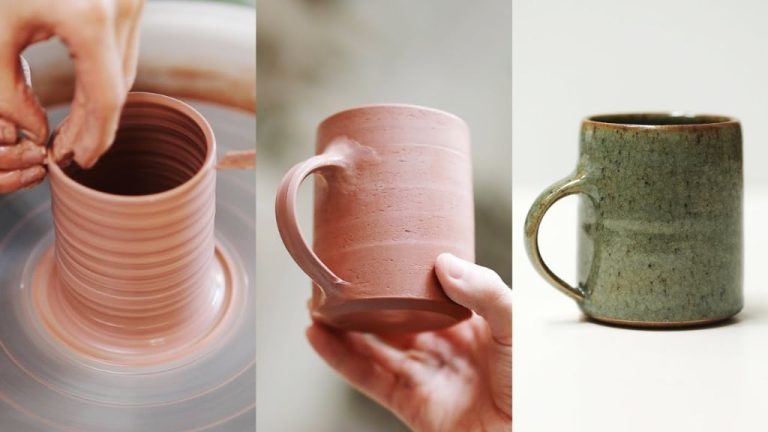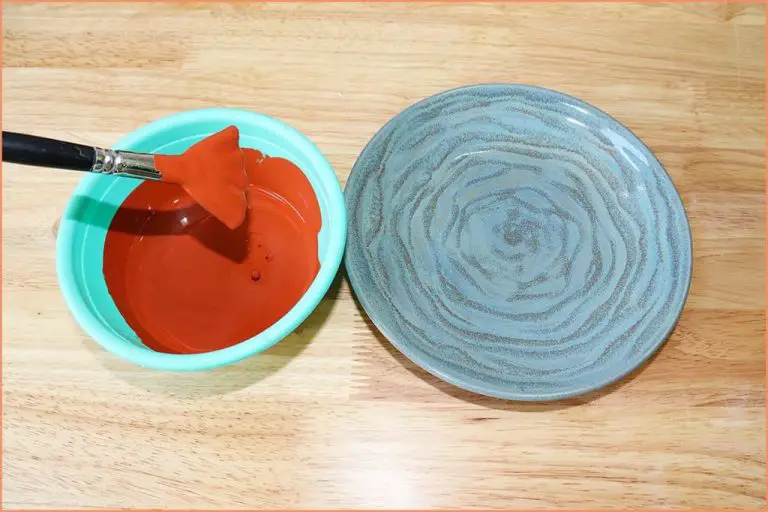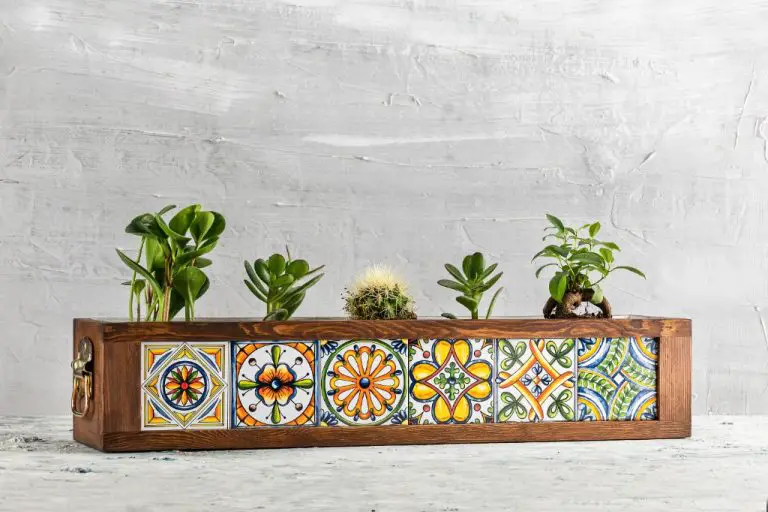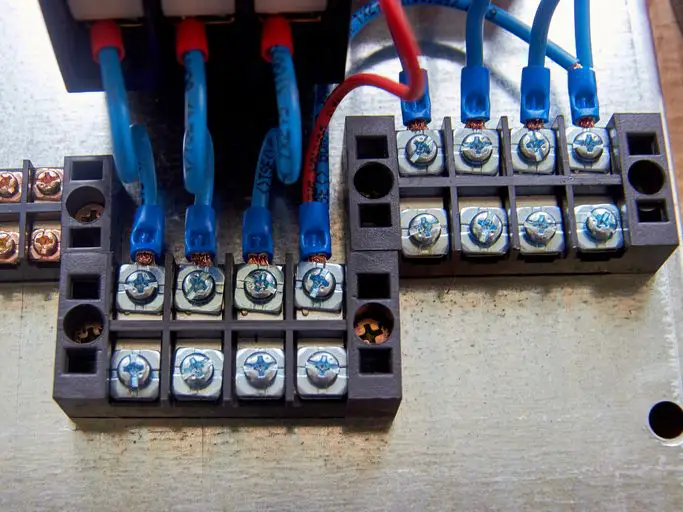Which Clay Pot Is Best For Cooking?
Introduction
Clay pots have been used for cooking for thousands of years across many cultures. The porous nature of clay allows heat and moisture to circulate evenly, making clay pots ideal for slow cooking, braising meats, cooking beans and rice, and more. Today there are many options when it comes to choosing a clay pot for cooking – from unglazed earthenware to glazed ceramics in various shapes and sizes. This article will provide an overview of the different types of clay pots available and their best uses in the kitchen.
Clay Pot Materials
When choosing a clay pot for cooking, one of the most important factors is the type of clay used. There are three main options:
Terracotta
Terracotta pots are made from natural reddish clay that is fired at a low temperature. This makes them porous and breathable, allowing steam to escape during cooking. Terracotta evenly distributes heat and retains moisture well. It’s ideal for dishes with longer cooking times like stews, beans, and rice.
Stoneware
Stoneware is made from very fine clay and fired at high temperatures. This makes it less porous than terracotta. Stoneware heats evenly, retains heat well, and resists thermal shock. It maintains moisture while still allowing some steam to escape. Stoneware works great for soups, braised meats, and casseroles.
Earthenware
Earthenware is made from coarse clay and fired at lower temperatures than stoneware. It’s lightweight and porous but less durable. Earthenware can provide good heat distribution for dishes with shorter cooking times like boiled vegetables, poached fish, or oatmeal. However, it may need more frequent moisture monitoring.
Considering the clay type along with your cooking needs can help determine the ideal pot material. Terracotta, stoneware, and earthenware each have their strengths depending on the dish being prepared.
Heating Properties
Clay pots excel at retaining heat thanks to the thermal mass properties of clay. When clay is heated, it absorbs and traps heat energy effectively. This allows clay pots to keep contents hot for prolonged periods without needing additional heat. The ability to retain heat depends on the clay material composition.
Terracotta, a common clay pot material, offers decent heat retention. According to the Ginpo Kikka Banko Donabe seller, their cast iron-clad pots retain heat 15% better than conventional clay pots made purely from terracotta (Source). Terracotta clay contains decent iron and mineral content which enables moderate heat storage.
Porcelain clay often adds kaolin clay or quartz to increase heat resistance and thermal shock properties. The higher heat tolerance prevents cracking under rapid temperature changes. Thus porcelain clay pots tend to retain heat even better than terracotta.
Advanced clay composites like cast iron-clad clay as used in the Ginpo Kikka Banko Donabe pots offer some of the best thermal retention. The cast iron exterior improves heat storage while the clay interior offers even heating and moisture control.
Moisture Control
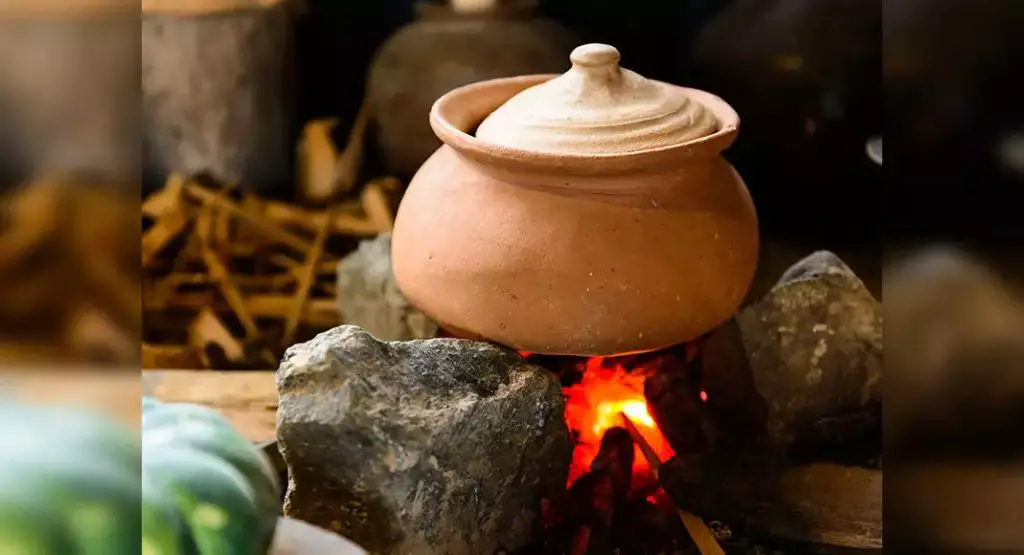
The porosity of the clay material has a significant impact on moisture evaporation when cooking with clay pots. Clay is porous due to small holes and pores spread throughout the material. This porosity allows moisture to seep through the clay walls and evaporate from the external surface of the pot. The evaporation creates a cooling effect which regulates the temperature and humidity inside the pot.
Studies have shown that increasing the surface area of a clay pot leads to higher evaporation rates and cooling power. As the evaporation happens on the outer walls, more surface area provides more opportunity for moisture release. This is why larger clay pots or pots with ribbed or fluted external sides can enhance moisture control. The porosity also varies based on the type of clay used. Terracotta, a commonly used clay for cooking pots, has a high porosity allowing ample moisture movement.[1]
Flavor Enhancement
One of the biggest benefits of cooking in clay pots is the enhancement of flavors and aromas compared to cooking in metal or glass pots. According to Nitin Mishra, clay’s porous nature allows steam to escape through the walls, concentrating flavors. At the same time, the steam infuses moisture back into the clay, preventing foods from drying out.
Clay pots cook at lower temperatures than metal or glass. This slower cooking draws out flavors and aromas over time, resulting in more complex and nuanced tastes. According to Gaia Collection, clay pots excel at braised dishes, soups, grains and beans, allowing their natural flavors to shine through beautifully.
Easy Cleaning
One of the best features of cooking with clay pots is how easy they are to clean. Clay is naturally nonstick, allowing food to gently release from the surface of the pot once cooked. This makes washing clay cookware much easier than scrubbing food burnt onto metal or nonstick pans.
According to Cleaning Clay Pots, clay’s porous material also allows you to sterilize the cookware with heat. After preheating your empty clay pot in the oven at 250°F for 30 minutes, harmful bacteria and fungi will be eliminated.
For stuck-on food, fill the pot with warm water and let it sit for 10-15 minutes. Then scrub with a soft brush or sponge and mild soap. Avoid abrasive scouring powders which can damage the clay over time. You can also use baking soda or vinegar solutions to help loosen dirt and disinfect.
With simple cleaning methods like these, clay pots will maintain their natural nonstick properties and last for years of continued cooking use.
Durability
The durability of a clay pot depends on the type of clay it is made from. Terracotta clay is very durable but can crack if exposed to sudden temperature changes. According to The Joy of Clay Pot Cooking, terracotta should be “tempered” by slowly bringing it up to high cooking temperatures to prevent cracking. Porcelain and stoneware clays are less prone to cracking. Porcelain clay pots are durable but the glaze can chip over time with use. Unglazed terracotta and stoneware are the most durable options.
The thickness of the clay also impacts durability. Thicker pots made from high-fired stoneware or porcelain clays will be the most durable for long term use. Thin, lightweight clay pots are more fragile and prone to cracking or breaking. According to a clay pot durability test, dropping a thin clay pot from waist height can cause it to crack or shatter. Thicker, high quality clay holds up better to impacts.
With proper care – avoiding sudden temperature changes and impacts – high quality clay pots can last for many years. Unglazed stoneware and terracotta pots are the most durable options for long term cooking use.
Budget Options
When shopping for clay pots, you don’t have to spend a lot to get good quality. There are many inexpensive options that still perform very well for cooking. According to Madoa, basic terra cotta pots from your local garden store can work great and cost under $10. The porous material absorbs moisture well and distributes heat evenly. Just make sure to get an unglazed terra cotta pot that is oven safe up to the temperatures you’ll be cooking at. With proper care and seasoning, these budget pots will last for years.
Another affordable option is a basic clay flower pot or bean pot from a restaurant supply store, as recommended in a Madoa video. These utilitarian pots often cost $20 or less. While not as attractive, they are durable, retain heat well, and impart great flavor. With a bit of oil seasoning, they perform just as good as more expensive models.
Cheap clay pots may be basic, but don’t underestimate their cooking abilities. With some smart shopping, you can get excellent results on a budget.
High-End Picks
If you’re willing to spend a little more, there are some exceptional high-end ceramic clay pot brands that are worth the investment. These pots excel in heating properties, moisture control, durability, and ease of use.
Some top high-end picks include:
- Emile Henry – French-made ceramic pots that can go directly from freezer to oven. Made from natural Burgundian clay.
- Le Creuset – Beautiful enameled cast iron Dutch ovens excellent for braising, stewing, and baking bread.
- Staub – French cocottes and Dutch ovens with matte black enamel interiors that excel at braising meats.
- Chantal – Ceramic pots made in France, specializing in slow-cook pots with Japanese matte enamel interiors.
While expensive, these brands offer superb craftsmanship and quality materials for pots that will last decades. The combination of heating performance, even cooking, and easy cleanup makes these excellent investments for home chefs.
Conclusion
While there are many types of clay pots available, the most versatile and dependable for cooking purposes is the red clay terracotta handi pot1. It cooks and holds heat evenly, enhances flavor, preserves moisture, and is budget-friendly without sacrificing durability. The porous red clay allows steam to escape during cooking which concentrates flavors. Cheap unglazed terracotta pots soak up cooking liquids so flavors are added back in. With proper care, these versatile handi pots will last for years and provide delicious meals. For an all-purpose clay cooking pot that’s affordable and effective, the traditional Indian red clay terracotta handi pot is highly recommended.

